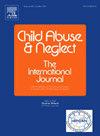1997年至2022年期间注册护士-家庭伙伴关系客户的人口统计趋势和需求
IF 3.4
2区 心理学
Q1 FAMILY STUDIES
引用次数: 0
摘要
近几十年来,随着青少年怀孕率的下降和医疗补助资格的扩大,符合医疗补助资格的未生育孕妇的人口统计数据和需求发生了变化,护士-家庭伙伴关系(NFP)的目标人群。目的研究NFP客户人口特征和需求影响客户和儿童结局的趋势。研究对象为未生育、怀孕的个体(N = 349,935;在1997年至2022年期间,33%的西班牙裔、30%的非西班牙裔黑人、30%的非西班牙裔白人参加了NFP,这是一项旨在通过家庭护士探视改善客户和儿童结果的国家公共卫生干预措施。方法采用广义线性模型和时变模型考察随时间的变化。结果入组年份越晚,预测入组年龄越大的患者种族/族裔多样化程度越高(β = 0.24±0.002,P <;0.0001)受教育程度更高的客户(大学学历vs高中文凭/GED OR 1.195, 95% CI 1.194-1.195),已婚/同居客户(OR 1.131, 95% CI 1.129-1.132),更高精通分数的客户(β = 0.007±0.0001,P <;.0001),以及客户需求的增加(孕前心理/身体健康诊断、药物使用/成瘾、IPV暴露和无家可归;or 1.082 - 1.300,均为P <;。)。客户的平均总需求从1997年的1.17增加到2022年的1.36。由于较高的健康诊断率和药物使用率,与西班牙裔和非西班牙裔黑人客户相比,非西班牙裔白人客户的总需求更高。结论NFP客户的人口结构和需求随着时间的推移发生了变化。与最初的试验和早期的项目复制相比,最近的客户年龄更大,受教育程度更高,但在各种领域有更大的需求,增加了客户和儿童预后不良的风险。本文章由计算机程序翻译,如有差异,请以英文原文为准。
Trends in demographics and needs for nurse-family partnership clients enrolled between 1997 and 2022
Background
Demographics and needs of nulliparous, Medicaid-eligible pregnant individuals, the target profile for Nurse-Family Partnership (NFP), have shifted over recent decades as teen pregnancy rates have dropped and Medicaid eligibility has expanded.
Objective
We examined trends in the proportion of NFP clients with demographic characteristics and needs impacting client and child outcomes.
Participants and setting
Participants were nulliparous, pregnant individuals (N = 349,935; 33 % Hispanic, 30 % non-Hispanic Black, 30 % non-Hispanic White) enrolled between 1997 and 2022 in NFP, a national public health intervention aimed at improving client and child outcomes through in-home nurse visitation.
Methods
Generalized linear models and time-varying models examined change over time.
Results
Later enrollment year predicted enrollment of: more racially/ethnically diverse clients with older age (β = 0.24 ± 0.002, P < .0001) more educated clients (college degree vs. high school diploma/GED OR 1.195, 95 % CI 1.194–1.195), more married/cohabiting clients (OR 1.131, 95 % CI 1.129–1.132), clients with higher mastery scores (β = 0.007 ± 0.0001, P < .0001), and increased client needs (pre-pregnancy mental/physical health diagnoses, substance use/addiction, IPV exposure, and homelessness; ORs 1.082 to 1.300, all P < .0001). The average summed needs of clients increased from 1.17 in 1997 to 1.36 in 2022. Non-Hispanic White clients had greater summed needs compared to Hispanic and non-Hispanic Black clients, driven by higher rates of health diagnoses and substance use.
Conclusion
The demographics and needs of NFP clients have shifted over time. Compared to the original trials and earlier program replication, recent clients are older and more educated but have greater needs in a variety of domains increasing risk of poor client and child outcomes.
求助全文
通过发布文献求助,成功后即可免费获取论文全文。
去求助
来源期刊

Child Abuse & Neglect
Multiple-
CiteScore
7.40
自引率
10.40%
发文量
397
期刊介绍:
Official Publication of the International Society for Prevention of Child Abuse and Neglect. Child Abuse & Neglect The International Journal, provides an international, multidisciplinary forum on all aspects of child abuse and neglect, with special emphasis on prevention and treatment; the scope extends further to all those aspects of life which either favor or hinder child development. While contributions will primarily be from the fields of psychology, psychiatry, social work, medicine, nursing, law enforcement, legislature, education, and anthropology, the Journal encourages the concerned lay individual and child-oriented advocate organizations to contribute.
 求助内容:
求助内容: 应助结果提醒方式:
应助结果提醒方式:


